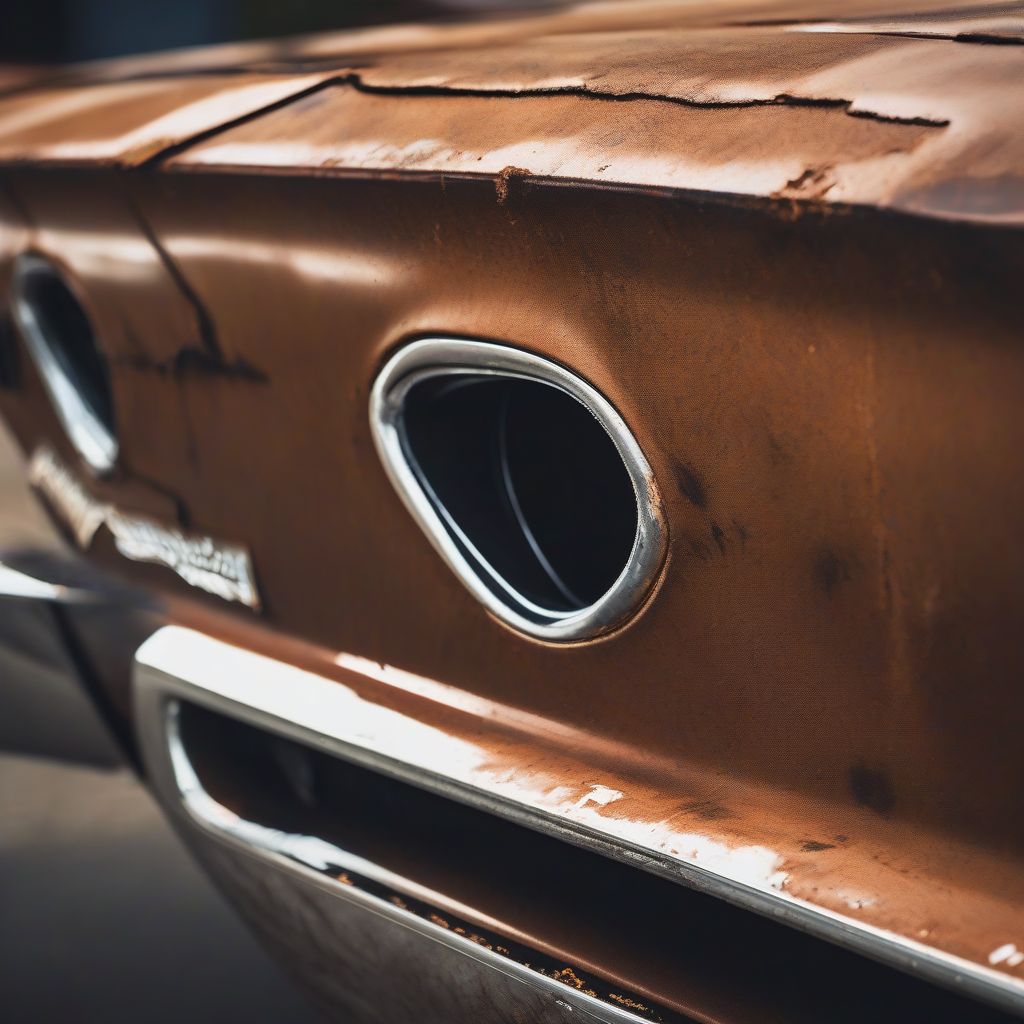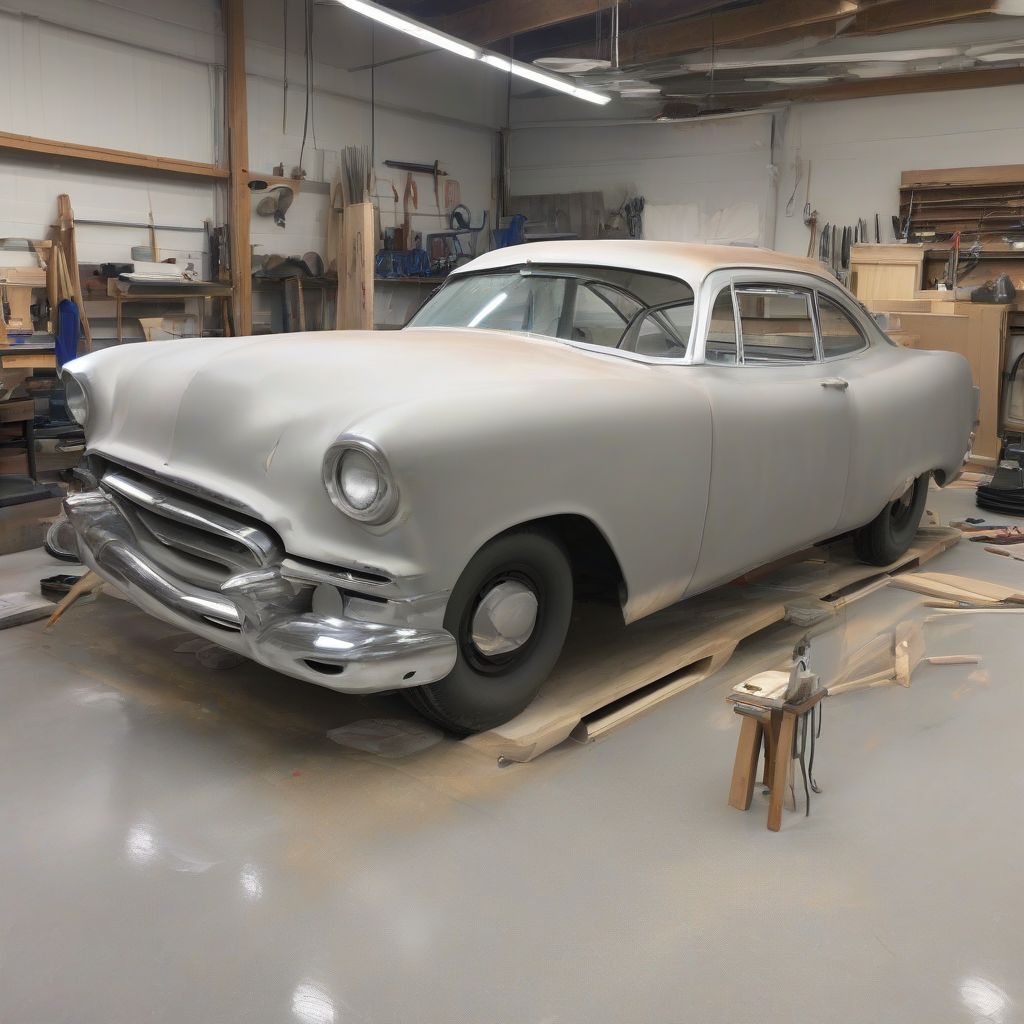There’s a certain magic about classic cars. They represent a bygone era of craftsmanship, style, and pure driving passion. But time, as it always does, takes its toll. If you’re the proud owner of a classic car, you understand the desire to see your prized possession returned to its former glory. That’s where expert advice on classic car bodywork restoration comes in. It’s not just about fixing dents and scratches; it’s about reviving a piece of automotive history.
Evaluating the Damage: The First Step in a Successful Restoration
Before you even think about paint colors or chrome polishing, you need a clear understanding of the task at hand. Just like a doctor examines a patient, a skilled bodywork professional will carefully assess the condition of your car’s body. This includes:
- Rust Assessment: Rust is the enemy of any car, especially classics. Identifying its location and severity is crucial for determining the best course of action.
- Panel Damage: Dents, dings, and more serious collision damage need to be identified and measured.
- Frame Integrity: In severe cases, the car’s frame might be compromised. This requires specialized attention and repair.
 Rust on Classic Car
Rust on Classic Car
The Art of Metalwork: Reshaping and Reviving Your Classic
Once the damage is assessed, the real artistry begins. Skilled metalworkers, often using techniques passed down through generations, will work to reshape your car’s body. This might involve:
- Panel Beating: The traditional method of hammering out dents and shaping metal using specialized tools.
- Welding: Repairing rust holes, patching panels, or even fabricating replacement parts from scratch.
- Filling and Smoothing: Using body fillers to address minor imperfections and create a perfectly smooth surface for painting.
Priming for Perfection: Preparing the Canvas for Paint
With the metalwork complete, the focus shifts to creating the ideal surface for paint. This critical stage involves:
- Stripping: Removing any old paint, rustproofing, or undercoating to bare metal.
- Priming: Applying a specialized primer that promotes adhesion and prevents rust.
- Block Sanding: Meticulously sanding the primed surface to ensure it’s flawlessly smooth and free of imperfections.
 Classic Car Body Priming
Classic Car Body Priming
The Paint Shop: Where Your Classic Regains its Luster
This is where the transformation truly comes to life. Choosing the right paint color and finish is a personal decision, and a professional shop will help you find the perfect match for your car’s year, make, and model.
- Color Matching: Using advanced techniques to recreate the original factory color with incredible accuracy.
- Paint Application: Applying multiple coats of high-quality automotive paint using specialized spray guns for an even, flawless finish.
- Clear Coat Protection: Adding a durable clear coat layer to protect the paint, enhance the shine, and provide UV protection.
The Finishing Touches: Chrome, Trim, and Interior
The bodywork might be the most involved aspect, but the finishing touches are what truly bring your classic car back to life. This includes:
- Chrome Plating: Restoring or replacing chrome bumpers, trim, and other brightwork to their original shine.
- Interior Restoration: Addressing upholstery, carpets, dashboards, and other interior components to match the exterior’s restored beauty.
- Mechanical Checkup: While not strictly bodywork, it’s a good idea to have the engine and mechanical components inspected and serviced while the car is being restored.
Finding the Right Professionals: Expertise and Passion Are Key
Classic car bodywork restoration is a specialized field. When choosing a shop or individual professionals, look for:
- Experience: Seek out professionals with a proven track record in restoring cars similar to yours.
- Craftsmanship: Pay attention to the details of their past work. Do they have a reputation for excellence?
- Passion: Choose a team that shares your love for classic cars and understands the value of preserving automotive history.
[amazon bestseller=”classic car restoration”]
Conclusion: A Labor of Love, Worth Every Detail
Restoring a classic car is more than just a repair job; it’s a journey of passion, dedication, and artistry. By seeking out expert advice and entrusting your prized possession to skilled professionals, you can bring your automotive dream back to life and enjoy the thrill of cruising in a piece of history. Don’t hesitate to share your own restoration stories or ask any questions you might have in the comments below. Let’s celebrate the timeless beauty of classic cars together!
